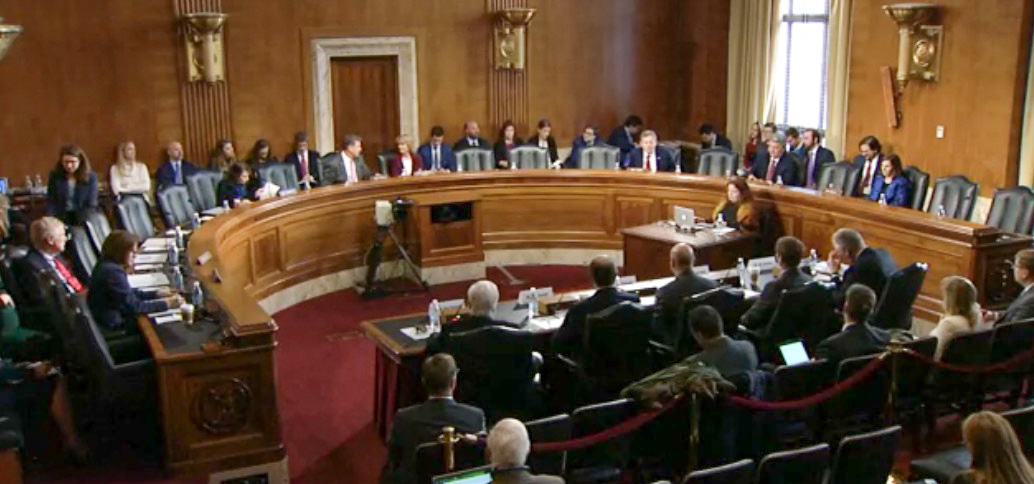
Today the U.S. Senate Committee on Energy and Natural Resources held a hearing to examine the impacts of wildfire on electric grid reliability, efforts to mitigate wildfire risk, and how to increase grid resiliency.
The five witnesses at the hearing were Bill Johnson (PG&E), Michael Wara (Stanford Woods Institute for the Environment), Scott Corwin (Northwest Public Power Association), Carl Imhoff (USFS Pacific Northwest National Laboratory), and Dr. B. Don Russell (Texas A&M).
The Senators and witnesses talked about Pacific Gas and Electric’s bankruptcy following the fires caused by their system, the future of preemptive power shutoffs during periods of high fire danger, and two new advances in technology that could help prevent some fires that are caused by power lines.
Dr. B. Don Russel, a professor at Texas A & M, told the committee about distribution fault anticipation technology developed at his university that uses intelligent algorithms to continually monitor electric circuits to detect the very earliest stages of failing devices and missed operations. The concept is simple, he said. You find and fix it before the catastrophic failure causes a fire or an outage. Dr. Russel repeatedly advocated the adoption of this system.
San Diego Gas and Electric’s research found that it takes 1.37 seconds for a broken conductor to hit the ground, for example, if a tree falls into the line or a vehicle hits a power pole. When the line contacts the ground sparks can ignite vegetation. The system is designed to detect a break and shut off the power before the clock hits 1.37 seconds — hopefully, avoiding what could become a dangerous wildfire.

Bill Johnson became the CEO of Pacific Gas & Electric about 8 months ago about the time the company began going into bankruptcy. Senator Murkowski asked him how much longer residents in California would continue to be affected by the electricity being shut off during periods of high fire danger.
Mr. Johnson said San Diego Gas & Electric is still doing Public Safety Power Shutoffs (PSPS) in Southern California during periods of high fire danger 12 years after their power lines started multiple large fires in 2007, but the shutoffs are “surgical” and very localized. He said “[I]n Northern California it would take us probably five years to get to the point where we can largely eliminate this tool… So I think over the next couple of years you’ll see a progression of shorter, fewer PSPS events. But the climate change and the weather change is dramatic enough that I don’t think we will see the end of it for some period of time.”
Dr. Michael Wara discussed the effect of PSPS on residents:
The use of PSPSs has both prevented wildfire and caused widespread disruption to families and businesses, especially in Northern California. PSPS events, though they do dramatically improve safety, are likely very costly to the health of the economy, especially in smaller communities. My best estimate, using the Interruption Cost Estimator tool developed by Lawrence Berkeley Laboratory indicates that PG&E PSPS events in 2019 cost customers more than $10 billion – that’s 0.3% of gross state product or 10% of overall economic growth this year in California.
In October we wrote about the effects of PSPSs on California residents.
Below is an excerpt from Mr. Johnson’s prepared testimony about PG&E:
PG&E is deeply sorry for the role our equipment had in those fires and the losses that occurred because of them. And we’re taking action to prevent it ever happening again.
And today we’re taking that work a step further by increasing vegetation management in the high risk areas, incorporating analytical and predictive capabilities, and expanding the scope and intrusiveness of our inspection processes.
We deployed 600 weather stations and 130 high resolution cameras across our service areas to bolster situational awareness and emergency response. We’re using satellite data and modeling techniques to predict wildfire spread and behavior. And we’re hardening our system in those areas where the fire threat is highest by installing stronger and more resilient poles and covered line, as well as undergrounding.
And this year we took the unprecedented step of intentionally turning off the power for safety during a string of severe wind events where we saw up to 100 mile an hour winds on shore in Northern California. And this decision affected millions of our customers, caused them disruption and hardship even if it succeeded in protecting human life.
We are operating on all fronts to make the system safer and more resilient.
You can watch a video of the entire hearing. It is one hour and 35 minutes, not counting the wait for it to begin at 17:57.

Thanks for this report, and for the link to the video. As usual, consumers take the hit and the companies get to walk away free. All hail capitalism.
https://sanfrancisco.cbslocal.com/2019/06/18/pge-wildfire-damage-settlement-1-billion/
https://www.abc10.com/article/news/local/wildfire/bankruptcy-judge-oks-pges-25-billion-settlements-with-wildfire-victims-insurers/103-12d131b8-3cdd-4ad6-982d-581b9940421a